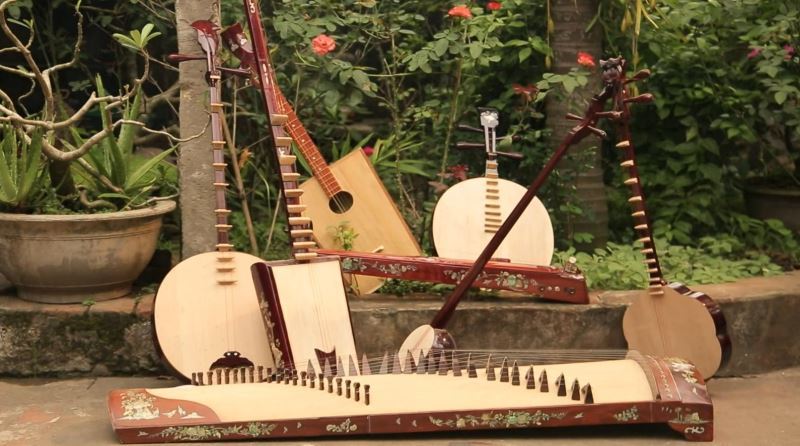Dao Xa is primarily a farming village. But villager craft various types of traditional instruments, including the “dan bau” (a monochord), the “dan nguyet” (a full-moon-shaped guitar with two strings) and the “dan nhi” (an upright two-string fiddle). Visitors will immediately smell the wood and hear the sound of these musical instruments.
Dao Xa’s musical instrument craft was founded by Dao Xuan Lan 200 years ago. In the middle of the 19th century, artisans moved to the Thang Long Citadel, called Hanoi today, and established a craft guild. A house of worship for Dao Xuan Lan still stands. Dao Xuan Mai, Lan’s descendant, said “When he was young, my great grandfather was a carpenter. He learned to make musical instruments from a foreign expert, and switched his occupation. When his business prospered, he returned to his home town to pass down the craft to others. Many of his students have also prospered and opened shops in big cities across Vietnam.”
.jpg)
In its heyday, there were more than 50 households in Dao Xa village involved in the craft. After the village’s reputation had spread, a group of local artisans were recruited to build musical instruments at the Hue Imperial Court.
.jpg)
Villager Dao Van Soan, a nationally famous artisan is the only person in Vietnam to have received the titles National Folk Artisan and Hanoi’s Emeritus Artisan. With 40 years of experience, Soan said he has known the craft’s ups and downs thoroughly, adding that the village thrived during the resistance war against the French and before the August Revolution in 1945.
.jpg)
"But it didn’t grow during the American war because of the economic difficulties. After the war, many locals left the village to work in Ho Chi Minh City, Thanh Hoa, or Nam Dinh province", said Mr Soan.
Soan said "The craft requires a lot of patience, skill, and energy. An instrument builder must master or, at least, know carpentry, not to mention having a good ear for music. It’s a matter of understanding wood, from selecting and drying the wood to shaping the body, attaching the neck, polishing, smoothing, fitting the strings, and completing the final decoration. All the work is done manually using traditional techniques."
.jpg)
According to Soan, the most difficult task is adjusting the instrument’s pitch and sound quality.
Visitors are surprised that although Dao Xa has supplied a large proportion of Vietnam’s musical instruments, none of the local instrument builders are professionally trained in music. The village consistently turns out instruments of the highest quality.
.jpg)
Mr. Hao, a trader of traditional musical instruments in Hang Hom Street, Hanoi, said “It’s impossible to confuse Dao Xa instruments with products from other places, because of the expertise of Dao Xa artisans. The craft know-how is handed down by word of mouth and monitored on the spot.”
According to VietKings (Kyluc.vn)








